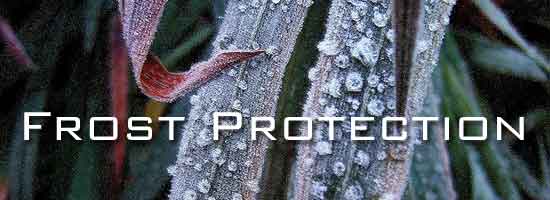Posts Tagged organic
Xeriscape Landscaping in Sonoma County
 Xeriscape Why?
Xeriscape Why?
Xeriscape became a word invented by Denver Water Department when forbidding watering in summer. Sonoma residents must:
- select plants appropriate to your climate,
- mulch plants to help them retain moisture
- care for your plants properly
- keep plants healthy
- Plant shrubs, trees and other attractive plants where grass used to be.
The foregoing basics reduce water consumption 60 percent. Instead of a monotonous expanse of lawn in shades of green to brown, your yard can become rich with variety and interesting to observers. Filling your yard with a variety of hardy drought tolerant plants indigenous to your area is making a pact with Mother Nature that you are on her side. You are now going to help her with a bounty of beautiful plants she worked over 1,000 years to perfect for your exact piece of land.
Prepare the Yard Soil
- Pick up a fistful of thoroughly wet soil from your yard and squeeze it into a ball. The ball will stay formed or will crumble apart.
- Add organic material to your soil if the ball of dirt crumbled quickly. Compost or manure helps crumbly soil retain moisture.
- Add sand or ground bark to the soil if the ball of dirt formed a tight, hard ball. Hard, clay soil allows all water to run off quickly before it even has a chance to reach a plant’s roots.
Grow Plants Nature Designed for Sonoma
- Grow plants native to the Sonoma parched earth. They adapted mechanisms over hundreds of years to tolerate and cope with your weather and water gauge, so require little watering. Landscape companies can recommend plants for you so that your unique taste can still be displayed in your xeriscape garden.
- Plant trees suited to dry landscaping, such as California buckeye, which though their seeds are poisonous, make great shaped trees. The U.S. Department of Agriculture plant hardiness dictates zones 6a and higher for Sonoma.
- Plant drought-tolerant xeriscape shrubs like California wild lilac, best in USDA zones 5b or higher with lovely flowers. California wild lilac can grow in either full sun or partial shade.
- Choose drought-tolerant ornamental grass like blue lyme for full sun or light shade. This clumping grass is very hardy, with gray-blue foliage and grows up to 4 feet tall with very little water.
- Plant xeriscape succulents in your hard that will store water in fleshy leaves and need little water from you. The Century plant, or Agave Americana, grows well in USDA Zones 9a through 11 in full raging sun or a little shade. Reaching 8 feet in height and 12 feet wide. They provide a focal point if you just make sure you have a safe distance between its spiny leaves and foot traffic.
Follow Xeriscape Principles
- You must cover your entire garden with a layer of mulch or compost so that the need for moisture due to evaporation is nil. Compost has nitrogen, giving plants nutrition and improving texture of your xeriscape yard soil.
- Water in early morning or evening to minimize any evaporation. Drip irrigation systems are the most effective method for Sonoma.
List of Zero to Low Water Need Plants for Sonoma Area
There are many drought tolerant plants needing no supplemental summer water once established. While these are uber-drought tolerant xeriscape plants, some will do a bit better with some water. Some fine shrubs that meet these criteria are:
- Arbutus Onedo
- Acca Sellowiana
- Baccharis Pilularis
- Buxus
- Callistemon spp.
Contact your local landscape company to learn the multitude of xeriscape plants that can beautify your home without watering!
Protecting Your Landscape From Frost Bite
The temperatures in Northern California are beginning to drop which means winter will be before us, before we know it. Night time temperatures that get down to freezing and below will damage some trees and plants if you don’t take precautions against frost. These low temperatures can begin late November and continue through February and beyond.
DK Landscaping helps you prepare your landscape and provides tips to protect your delicate plants from frost bite.

WINTERIZE
Fall is prime time to clean up your landscaping and remove the dead landscaping before it gets too cold. Removing dead plants can also stop the growth and spread of fungi that could infect your plants’ new growth in the spring.
PLANT
Planting trees and shrubs in the fall is a an optimal time before the first frost arrives and best time to take advantage on some great end of the season deals. Planting in the fall gives roots plenty of time to become established before the next growing season begins. Not only will you get to enjoy the changing leaves for a brief time, you will also put less stress on your young trees because of the cooler weather and rain conditions fall offers.
MULCH
Mulching can be a great first step in preparing for winter’s frost. If you are unfamiliar with mulching, check out our previous blog post called Mulch About Fall. There are many benefits to mulching your lawn and plants, especially before winter. Mulching in the fall can help protect your plant’s roots as well as help them retain moisture during the cold, dry winter.
Just a few preparations for winter can guarantee that your landscaping will come back fresher than ever in the spring.
For more information on the care of your landscape, please contact David or Kathy Lee from DK Landscaping (707) 280-3632.
Mulch About Fall

Did you know that mulching in the fall is just as important as it is in the spring and summer months? We mulch in the spring and summer months to suppress weeds, retain moisture and feed and warm the soil. However, when the temperatures begin to drop and the ground freezes, root systems can be exposed. The primary reason for winter mulching is to protect our plants from the harsh conditions of winter freezes, thaws and winds. Mulch acts as an insulator to balance the temperature creating a warm, heavy blanket of protection.
Neglecting to mulch in the fall can be damaging to your plants in the spring season. And the cost of mulching is nothing compared to the cost of replacing some of your favorite trees and shrubs. It also adds a beautiful aesthetic to your landscape in the winter months.
Using fall leaves as organic mulch is a great benefit to your landscape. They will break down over the course of the wintertime and create a layer of nutrients for your plants to draw from. Adding a layer of leaves over your perennials will help regulate soil temperature of the wintertime, as well as give new shoots a protective blanket as they enter the world in the spring.
DK Landscaping offers mulching installation in Sonoma County. Contact us for more information on the benefits of fall mulching (707) 280-3632.





